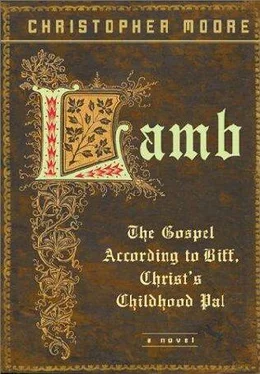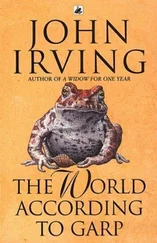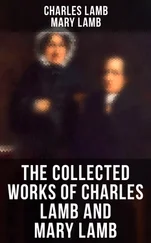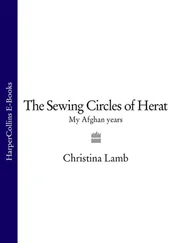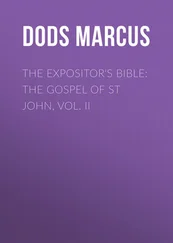Teaching Yoga to an Elephant
And there are also many other things which Jesus did, the which, if they should be written every one, I suppose that even the world itself could not contain the books that should be written. Amen.
JOHN 21:25
Can you really teach yoga to an elephant? Well no, you can’t, but we’re talking about Jesus here. Nobody knows what he could do.
The book you’ve just read is a story. I made it up. It is not designed to change anyone’s beliefs or worldview, unless after reading it you’ve decided to be kinder to your fellow humans (which is okay), or you decide you really would like to try to teach yoga to an elephant, in which case, please get videotape.
I researched Lamb, I really did, but there is no doubt I could have spent decades researching and still managed to be inaccurate. (It’s a talent, what can I say?) While I’ve made some attempt to paint an accurate picture of the world in which Christ lived, I changed things for my own convenience, and sometimes, obviously, there was no way of knowing what conditions really existed in the years 1 through 33.
The available written history about the peasant class, society, and the practice of Judaism in the first century in Galilee degenerates quickly into theory. The role of the Pharisees in peasant society, the Hellenistic influence, the influence of an international city like Joppa nearby: who knows how these things would have affected Christ as a boy? Some historians postulate that Yeshua of Nazareth would have been little more than an ignorant hillbilly, while others say that because of the proximity of Sepphoris and Joppa, he could have been exposed to Greek and Roman culture from an early age. I chose the latter because it makes for a more interesting story.
The historical life of Jesus, beyond a couple of references by Josephus, the Jewish historian of the first century, and the odd mention by Roman historians, is again mostly speculation. What we can know today of the life of Jesus of Nazareth is included in the four slim Gospels found in the New Testament: Matthew, Mark, Luke, and John. For those readers who know the Gospels (bear with me), you know that Matthew and Luke are the only two to mention Christ’s birth, while Mark and John cover only the ministry part of Jesus’ life. The wise men are mentioned only in one short passage in Matthew, and the shepherds are mentioned only in Luke. The slaughter of the innocents and the fleeing into Egypt are mentioned only in Matthew. In short, Jesus’ infancy is a jumble, but the chronicle of his childhood is worse. Of the time from Jesus’ birth to when he began his ministry in his thirties, the Bible gives us only one scene: Luke tells us of Jesus teaching in the Temple in Jerusalem at age twelve. Other than that, we have a thirty-year hole in the life of the most influential human being to ever walk the face of the earth. With Lamb, in my own goofy way, I attempted to fill that hole in history, but again, I am not trying to present history as it might really have been, I’m simply telling stories.
Some of the historical elements of Lamb are uncomfortable to work the modern mind around. The precocious sexuality comes to mind. That Maggie would have been betrothed by twelve and married by thirteen is almost certain from what we know of Jewish society in the first century, as are the facts that a Jewish boy of the time would have been learning his trade by age ten, would be betrothed at thirteen, and would be married by fourteen. Trying to create empathy for the adult roles of those whom we, today, would consider children, was of no small concern to me when I was writing that section of the book, but it may be the one section where the sexuality of the characters is not historically out of place. The average peasant in Galilee would have been lucky to live to the age of forty, so perhaps the children, by necessity, reached sexual maturity earlier than they would under less harsh conditions.
Although there are, I’m sure, many historical inaccuracies and improbabilities in this book, the most blatant that I have knowingly indulged is in the section where Biff and Joshua visit Gaspar in the mountains of China. While Gautama Buddha did indeed live and teach some five hundred years before the birth of Christ, and while his teachings were widespread in India by the time our heroes could have made it to the East, Buddhism didn’t make it into China for almost five hundred years after Christ’s death. The martial arts would not be developed by Buddhist monks until after that, but to remain historically accurate, I would have had to leave out an important question that I felt needed to be addressed, which is, “What if Jesus had known kung fu?”
The life of Gaspar, as described in Lamb (the nine years in the cave, etc.), is drawn from the legends of the life of the Buddhist patriarch Bodhidharma, the man who is said to have taken Buddhism to China around A.D. 500. Bodhidharma (or Daruma) is credited with the school of Buddhism that we know today as Zen. Buddhist legend does not mention Bodhidharma encountering a yeti, but they do have him cutting his eyelids off to avoid falling asleep and having them sprout into tea plants which later monks would brew to keep awake during meditation (which I left out), so I traded that story in on an abominable snowman and Biff’s theory of natural selection. Seemed fair. Bodhidharma is also said to have invented and taught kung fu to the famous Shao Lin monks to condition them for the rigorous regimen of meditation he prescribed.
Most of the details of the festival of Kali, including the sacrifices and mutilations, come from Joseph Campbell’s Oriental Mythology, from his Masks of God series. Campbell cites eyewitness accounts of the bloody ritual from nineteenth-century British soldiers and states that even today over eight hundred goats are beheaded for the festival of Kali in Calcutta. (Anyone who had trouble with this passage, please write to Campbell in his current incarnation.)
The cited verses from the Upanishads and Bhagavad Gita are actual translations of those revered writings. The verses from the Kama Sutra are completely from my imagination, but you’ll find weirder stuff in the actual book.
Theologically, I made certain assumptions about who Jesus was, mainly that he was who the Gospels say he was. While I used the Gospels heavily for reference, and there are a couple of references to the Acts of the Apostles (specifically the giving of the gift of tongues, without which Biff could not have told the story in modern American idiom), I tried not to draw on the rest of the New Testament, specifically the letters of Paul, Peter, James, and John, as well as Revelations, all written years after the Crucifixion (as were the Gospels). These missives eventually went on to define Christianity, but no matter what you may think of them, you have to agree that Jesus would not have been aware of them, or the events in them, or certainly the consequences of their teaching, so they had no place in this story. Joshua and Biff, as Jewish boys, would, however, have been familiar with the books of the Old Testament, the first five of which made up the base of their faith, the Torah, and the rest which were referred to by people of the time as Prophets and Writings, so I referred to these when I felt it was appropriate. As I understand it, however, the Talmud and most of the Midrash (illustrative stories explaining the law of God) had not yet been formulated and agreed upon, so they were not used as a reference for Lamb.
From the Gnostic Gospels (a set of manuscripts found at Nag Hammadi, Egypt, in 1945, but which actually may have been written earlier than the canonized Gospels) I’ve drawn only slightly on the Gospel of Thomas, a book of Christ’s sayings, because it fit well with the Buddhist point of view (many of the sayings in the Gospel of Thomas are also found in Mark). The other Gnostic Gospels were either too fragmentary, or frankly, just plain creepy (the Infancy Gospel of Thomas describes Jesus, at age six, using his supernatural powers to murder a group of children because they tease him. Sort of Carrie Goes to Nazareth. Even I had to pass.)
Читать дальше
